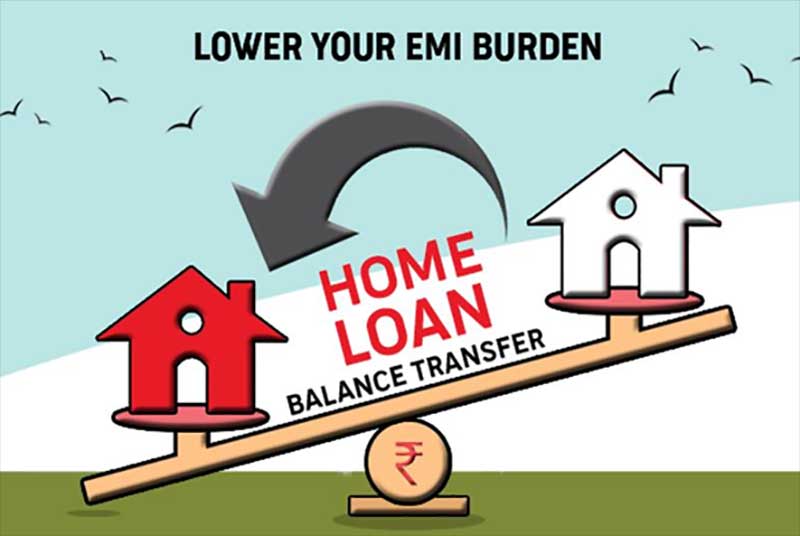 Home Loan Balance Transfer
Home Loan Balance Transfer
Tips for a Smooth Home Loan Balance Transfer: Dos and Don'ts
In the case of home loans, the rate of interest offered plays a crucial role in determining the affordability of the loan. High home loan interest rates can easily push one's EMIs into the unaffordable range and amplify the burden of loan repayment.
Low home loan interest rates, on the other hand, ease the burden of loan repayment by helping home loan borrowers keep their EMIs affordable. It is therefore not very surprising that home loan borrowers are always on the lookout for lenders who might be willing to offer them a lower interest rate, especially after the RBI released its mandate instructing lenders to not charge any penalty from individual borrowers on floating interest rates should they decide to foreclose their loan and transfer it to another lender.
The home loan balance transfer facility is a highly beneficial service offered by almost every lender these days. However, borrowers who want to reap maximum benefits from this facility must keep a few things in mind. This articles discusses the dos and don'ts of a home loan balance transfer.
Dos and Don'ts of a Home Loan Balance Transfer: Things to Keep in Mind When Opting for a Home Loan Balance Transfer
Dos
1. Perform a Cost-Benefit Analysis Before Transferring Your Home Loan to Another Lender
Home loan borrowers who want to switch to a lower interest rate through a home loan balance transfer must choose to go for this facility after doing a proper cost-benefit analysis. The cost-benefit analysis must be performed for two reasons:
A home loan balance transfer proves beneficial only when a lender opts for it during the early years of their loan tenor. Home loans are repaid through EMIs. Each EMI is divided into components: one is redirected towards covering the interest component of the loan and the other, the principal component. During the initial years, the interest component of the loan is high and the principal component is quite low. As the loan tenor moves forward, the principal component takes up most the EMI.
A home loan balance transfer helps save money when one opts for this facility during the early years of one's loan tenor. So, the timing of the switch must be right and a cost benefit analysis will tell you whether opting for a home loan balance transfer at that point in your home loan journey will prove fruitful or not.
A home loan balance transfer also involves a fee. If the fee is too high, the savings that one makes though the home loan balance transfer facility are just enough to cover the home loan balance transfer fee and in this case, transferring your loan to another lender does not make much sense.
2. Check the Reputation of Your New Lender
The majority of people opt for a home loan balance transfer to benefit from a lower rate of interest. Unfortunately, these days, many lenders who are not entirely reliable entice customers with low home loan interest rates, and home loan borrowers also fall prey to this. Thus, anyone planning to go for a home loan balance transfer must first check their new lender's reputation and then decide whether they should go for a home loan balance transfer. If a lender's reputation is dubious or if the lender is new and does not have much experience, home loan borrowers must stay away from them, even if these lenders are offering the borrower a much lower rate of interest.
3. Enquire About the Interest Rate and the Interest Rate type
As a rule of thumb, a home loan balance transfer proves useful when there is at least a 25bps difference in the old and new home loan interest rates when the remaining tenor is 15 years and when the difference in the old and new interest rates is at least 50bps when the remaining loan tenor is 10 years. So, before you opt for a home loan balance transfer, make sure the difference in the interest rate is considerable. Further, do enquire about the interest rate type you are being offered. Borrowers opting for a home loan balance transfer can change their interest rate type. Fixed interest rate home loans are more expensive than floating interest rate home loans. However, repayment planning is much easier in the case of fixed interest rate home loans. So, before applying for a home loan balance transfer, decide the home loan interest rate type you want.
Don'ts
1. Do Not Avail of a Top-Up Loan if You Are Not Ready
When people apply for a home loan balance transfer, they are given the option of availing a top-up loan. This top-up loan comes with zero end-use restrictions, which is its biggest highlight. Further, the interest rate on these loans is quite low and they come with a long repayment tenor. Thus, most people who opt for a home loan balance transfer jump at the opportunity of availing a top-up loan. However, borrowers who are already finding it hard to afford their EMIs must never avail of a top-up loan as it only adds to their burden.
2. Not Maintaining a Good CIBIL Score and Not Checking Their New Lender's Home Loan Eligibility Criteria
Most people who opt for a home loan balance transfer assume that since they are not applying for a new loan and are simply opting for a home loan balance transfer, their new lender will not check whether they qualify for the home loan eligibility criteria. This is a misconception -- every home loan balance transfer application is treated as a new application, and if you do not meet your new lender's eligibility requirements, your home loan application will be rejected. Similarly, if you do not have a good credit score, i.e., anything between 750 and 900, your new lender will not entertain your request to transfer your home loan to them.
Final Words
A home loan balance transfer is a highly beneficial facility. However, one must avail of this facility after careful planning. Keeping the dos and don'ts mentioned above in mind will help you get approved for a home loan balance transfer and make all the right decisions regarding it.
Support Our Journalism
We cannot do without you.. your contribution supports unbiased journalism
IBNS is not driven by any ism- not wokeism, not racism, not skewed secularism, not hyper right-wing or left liberal ideals, nor by any hardline religious beliefs or hyper nationalism. We want to serve you good old objective news, as they are. We do not judge or preach. We let people decide for themselves. We only try to present factual and well-sourced news.







